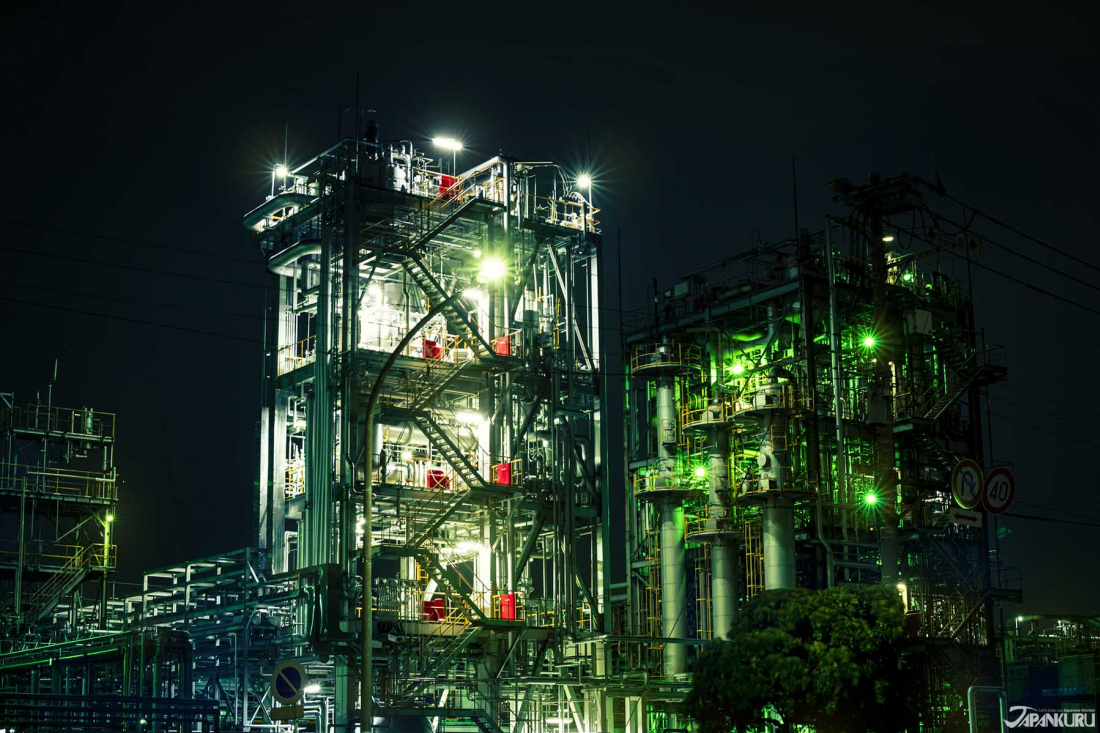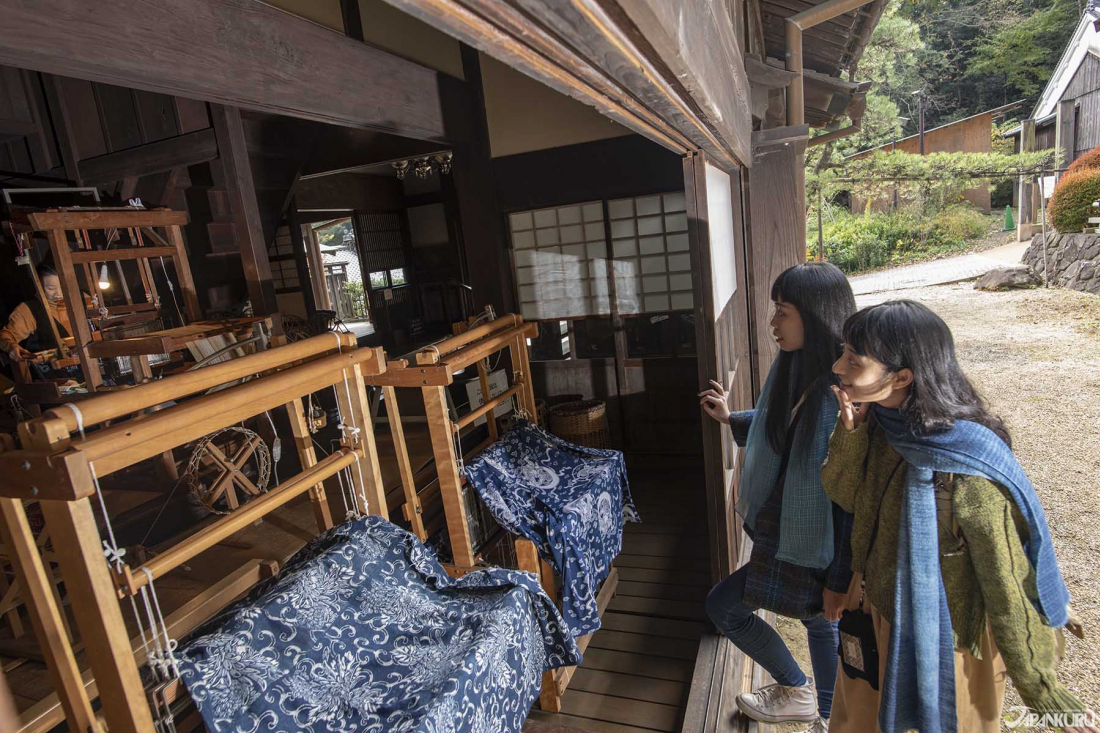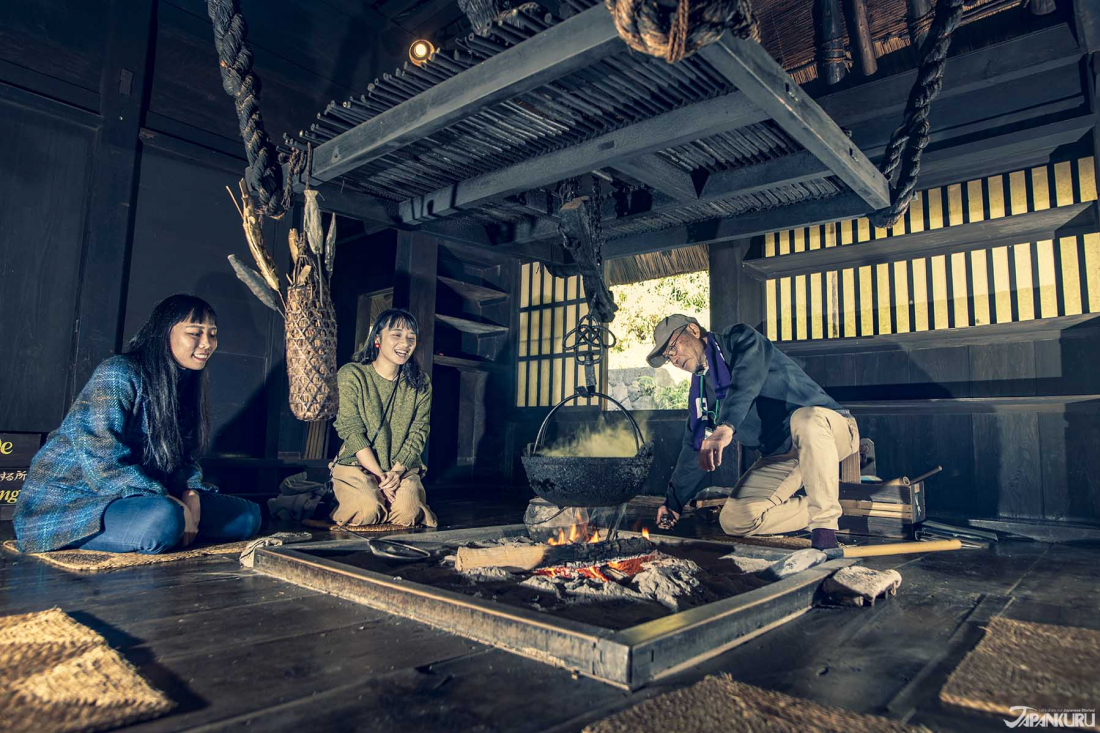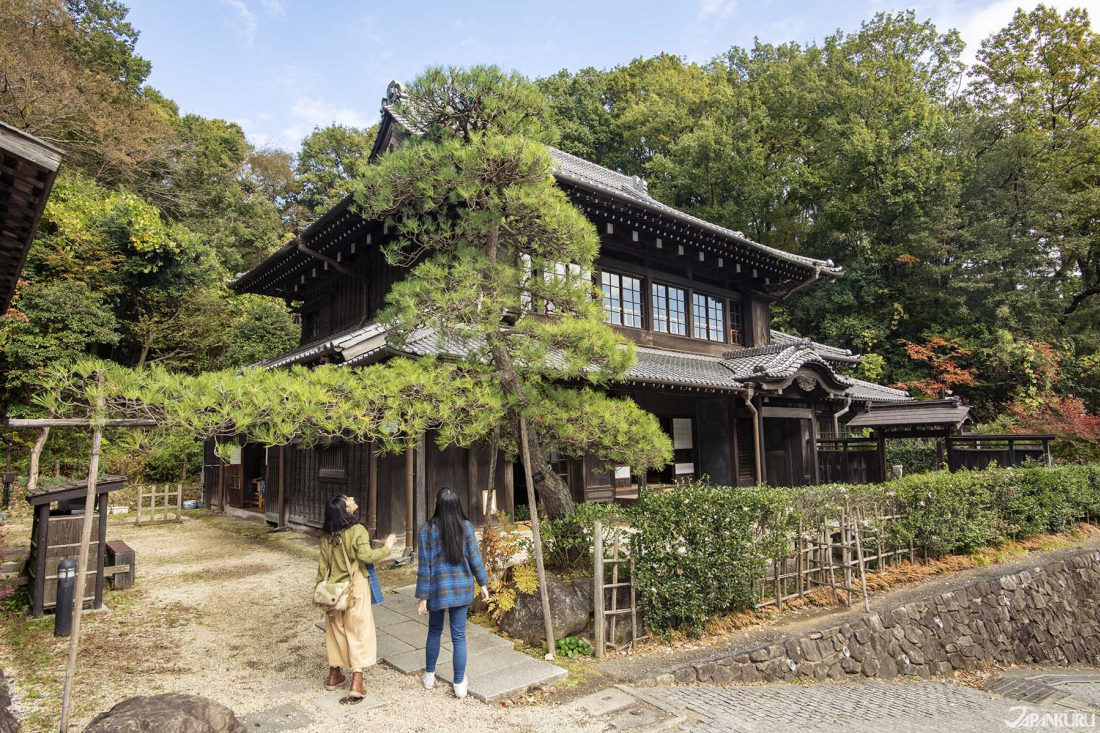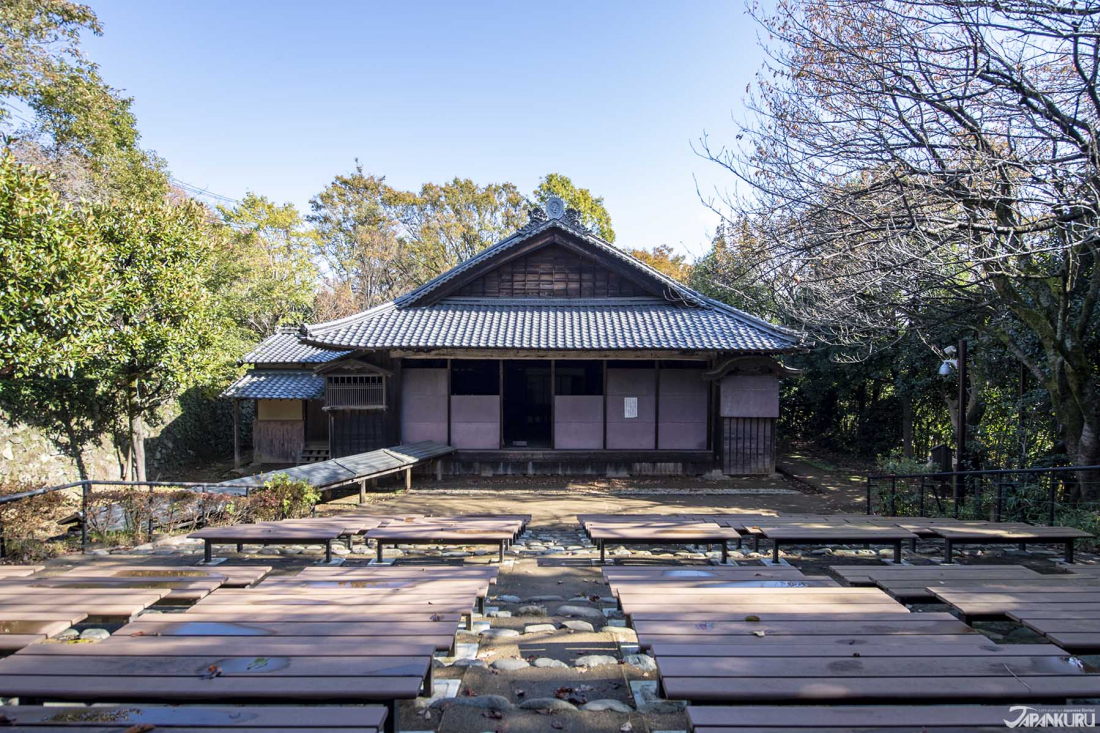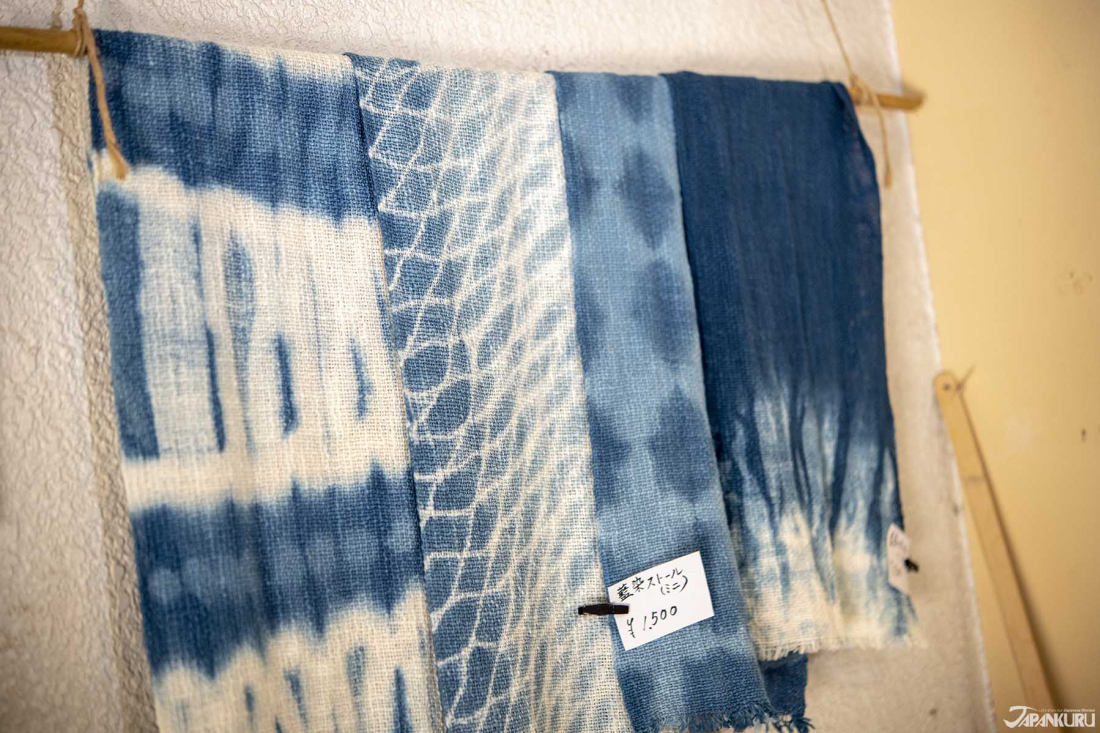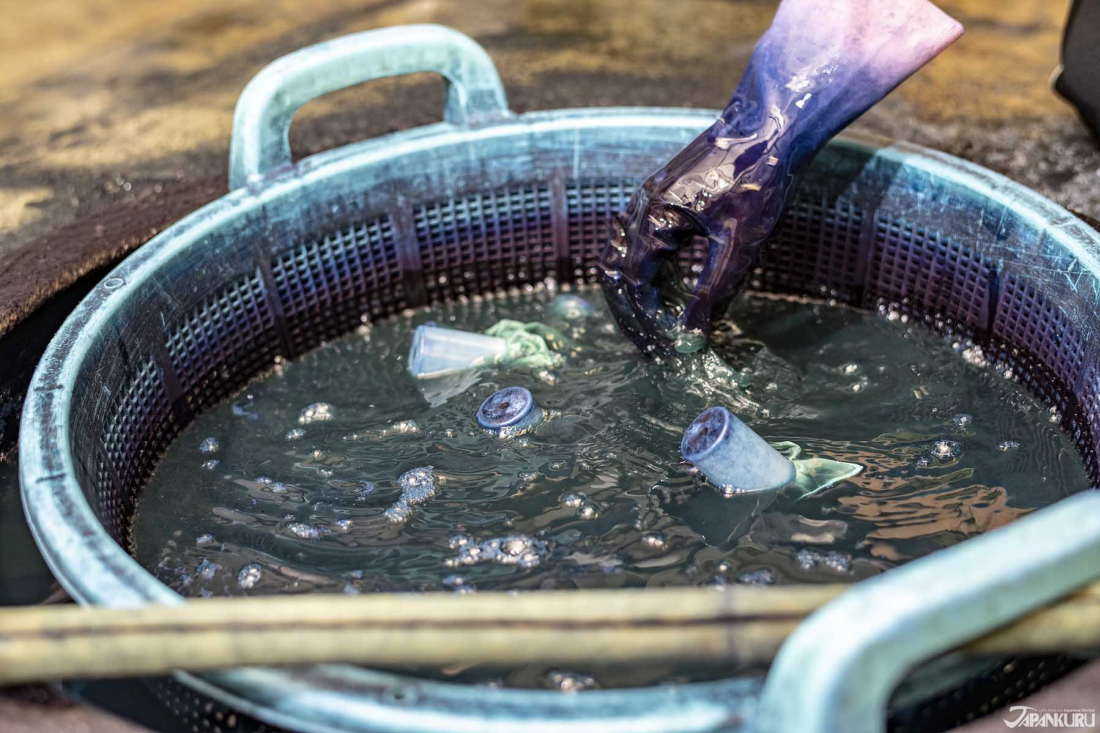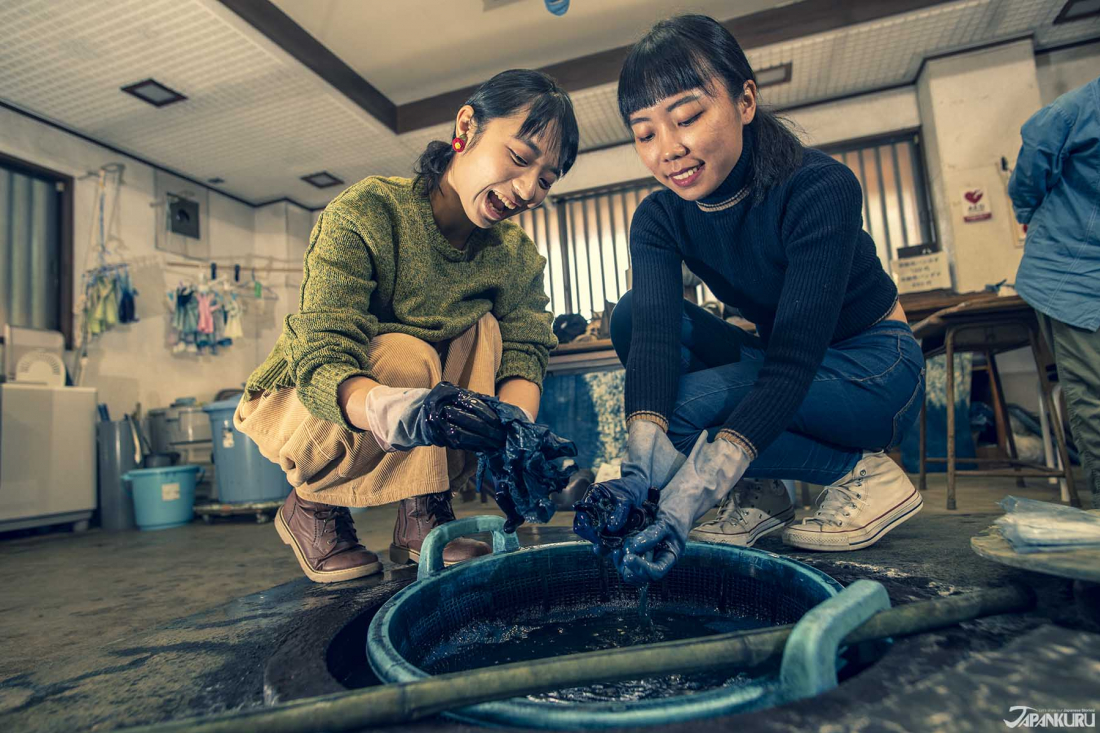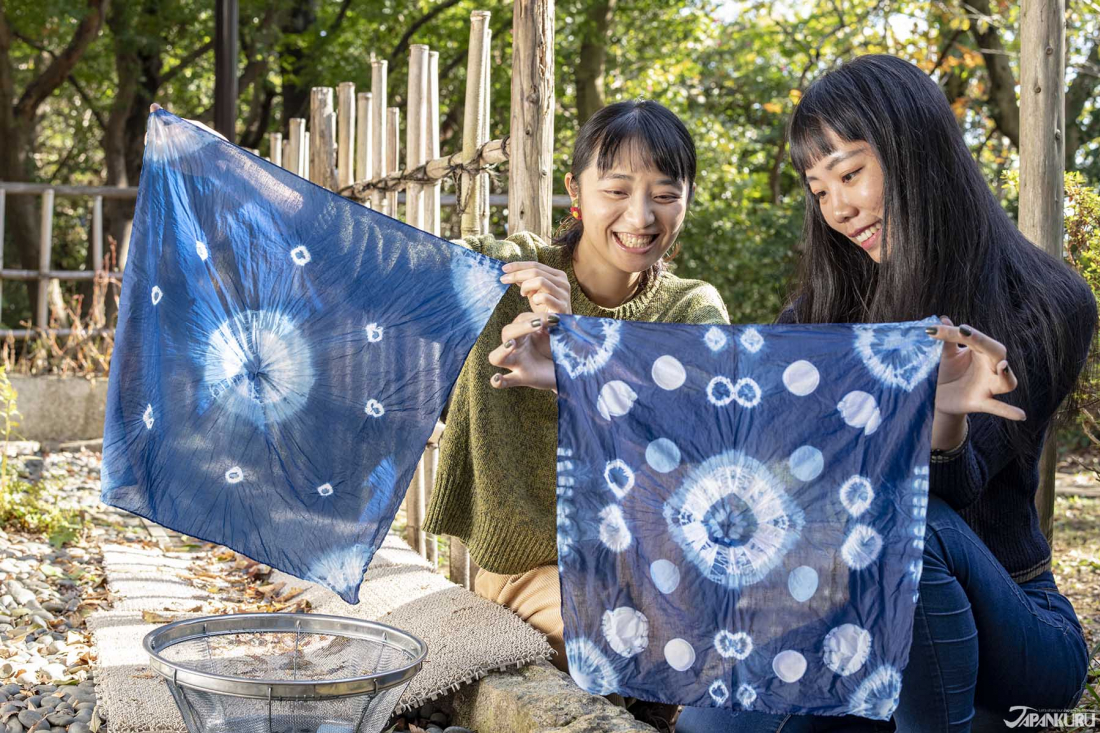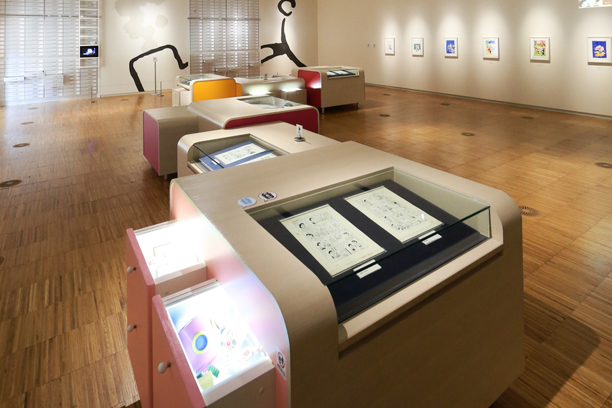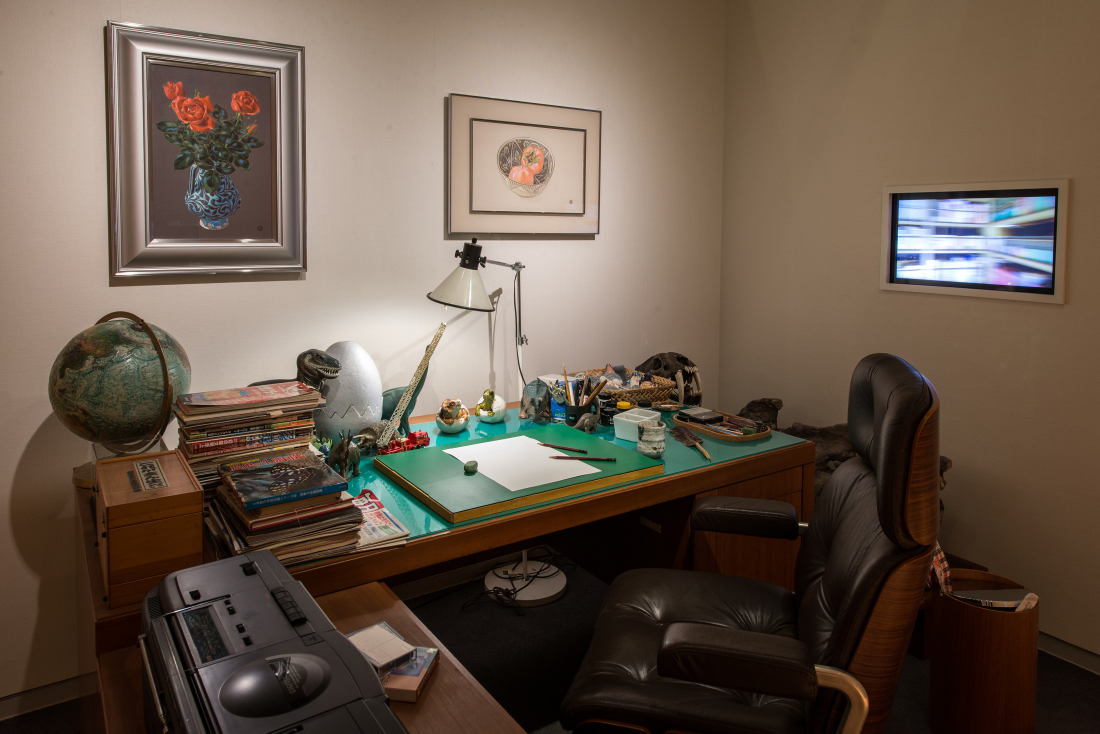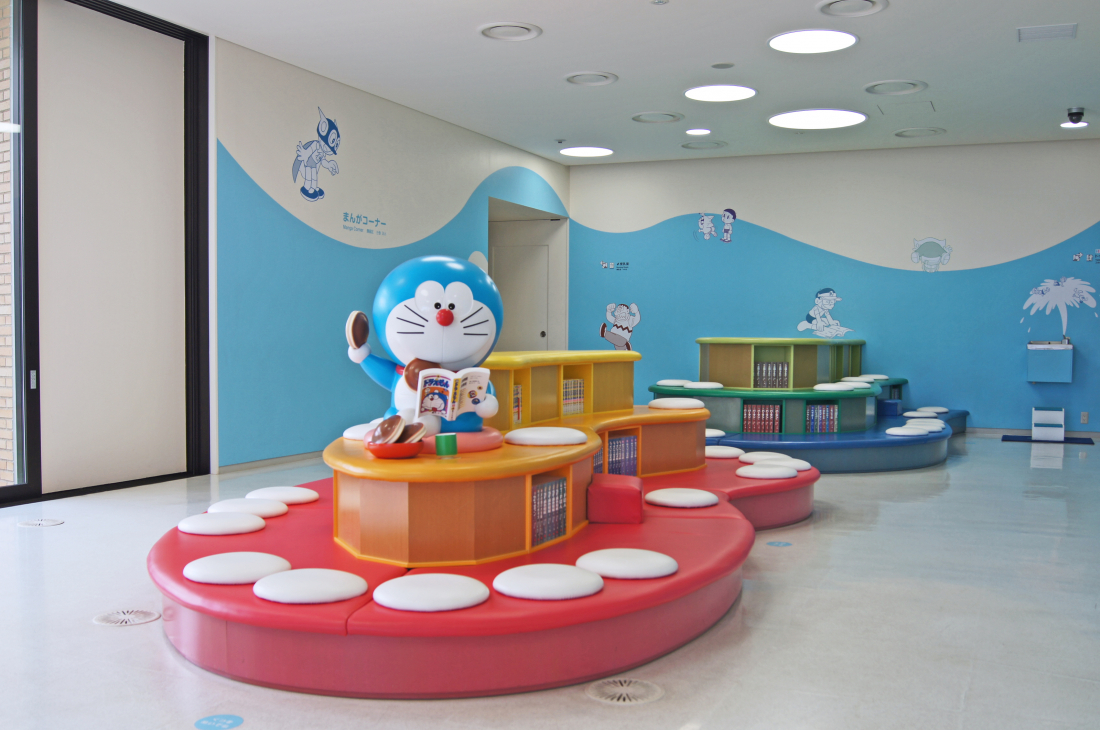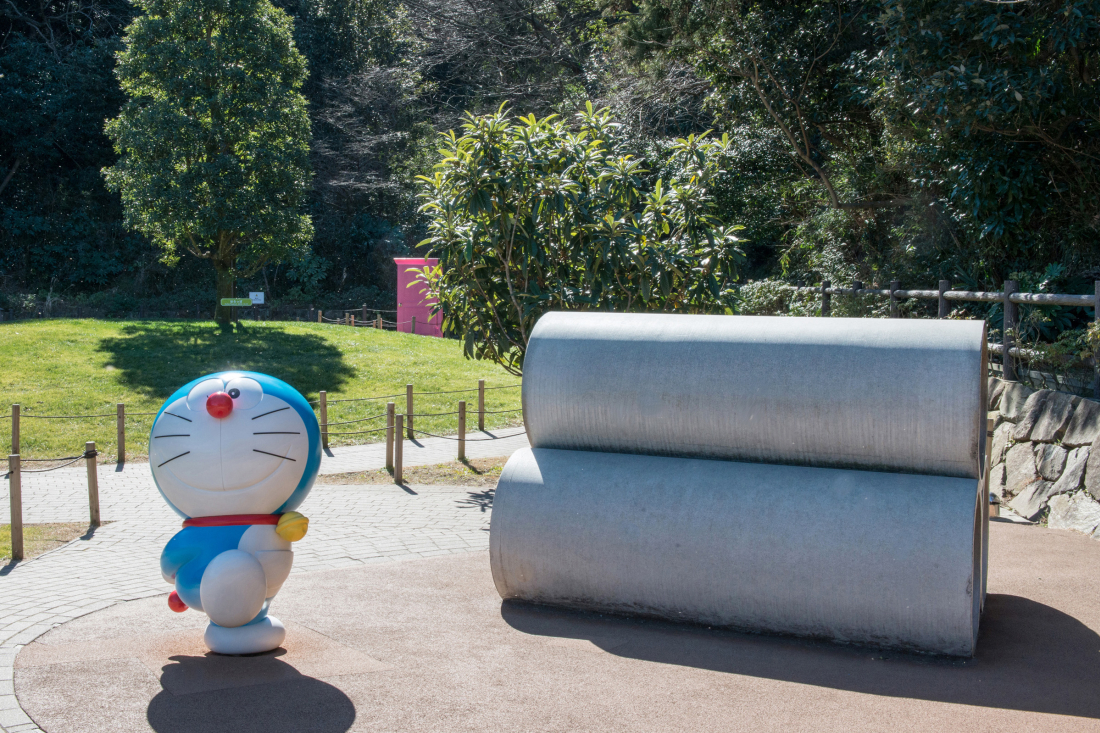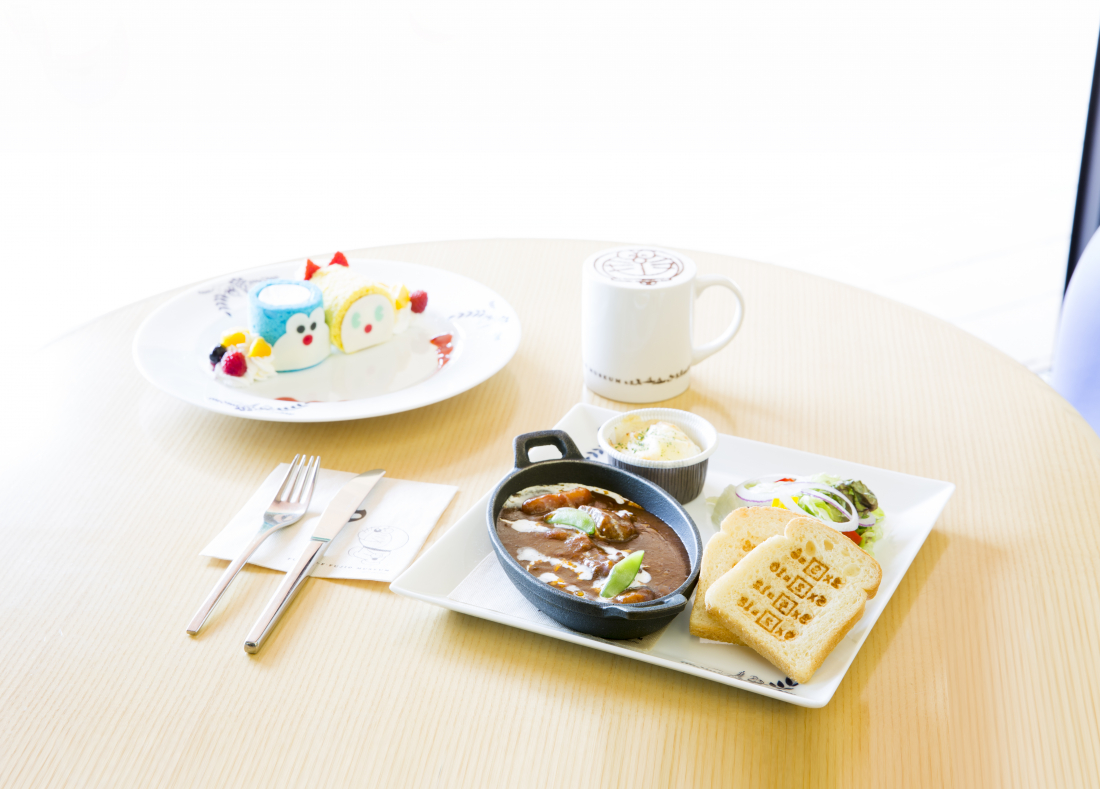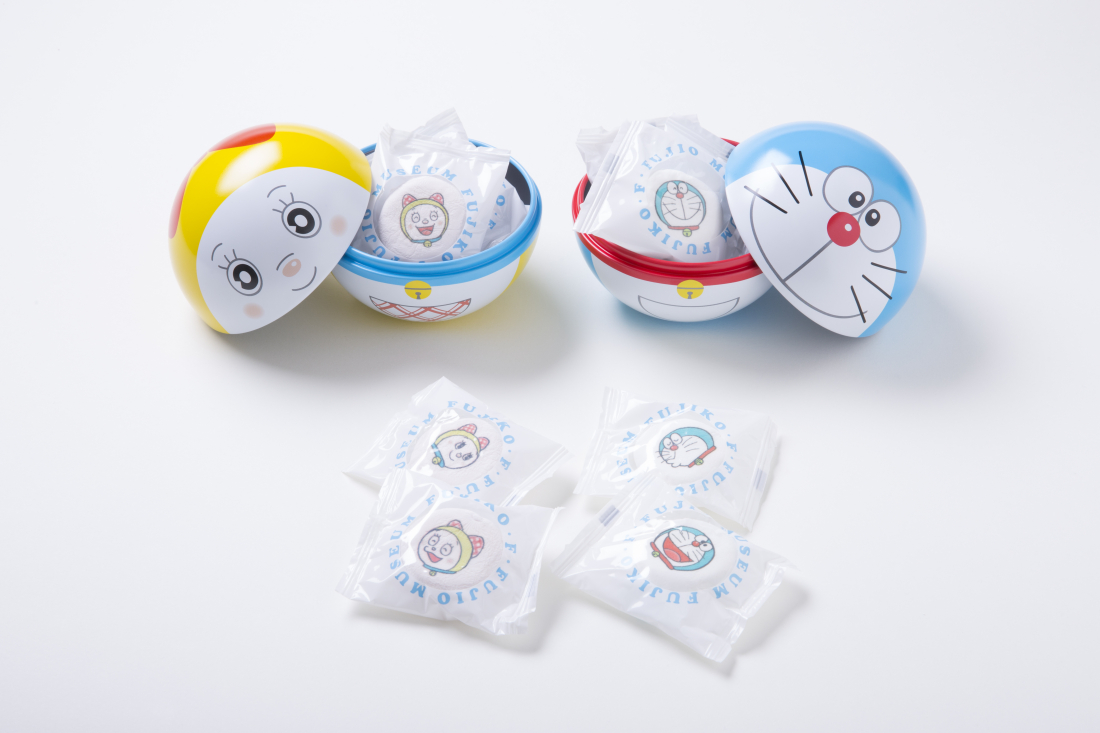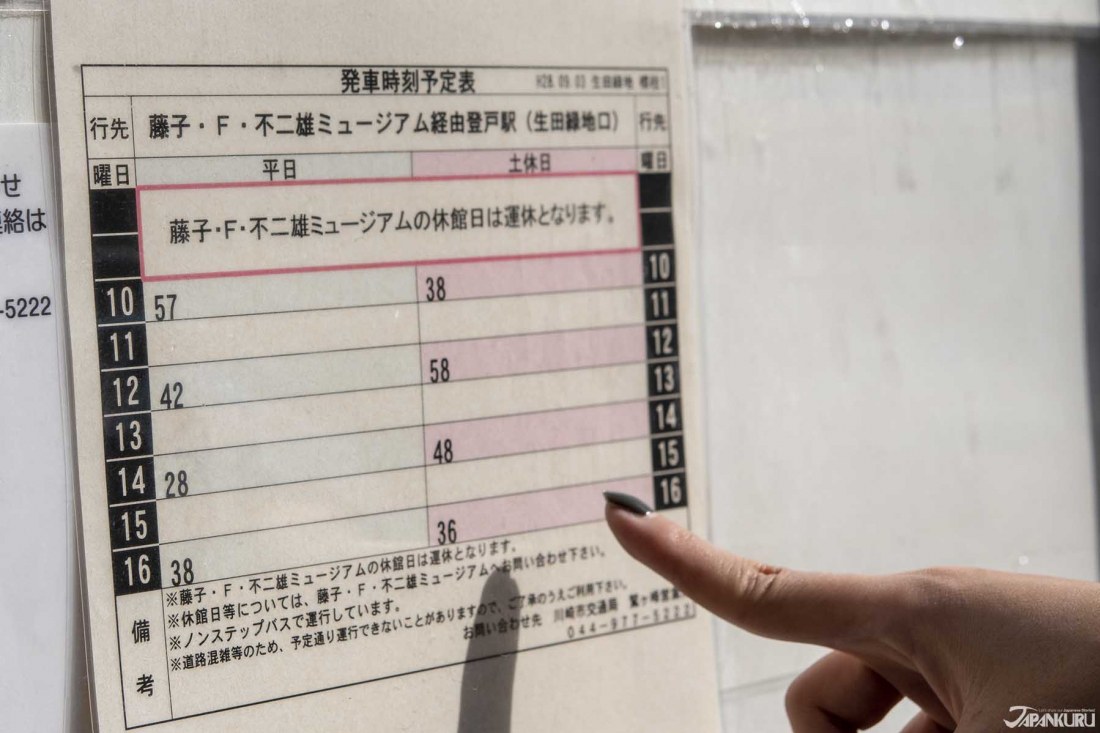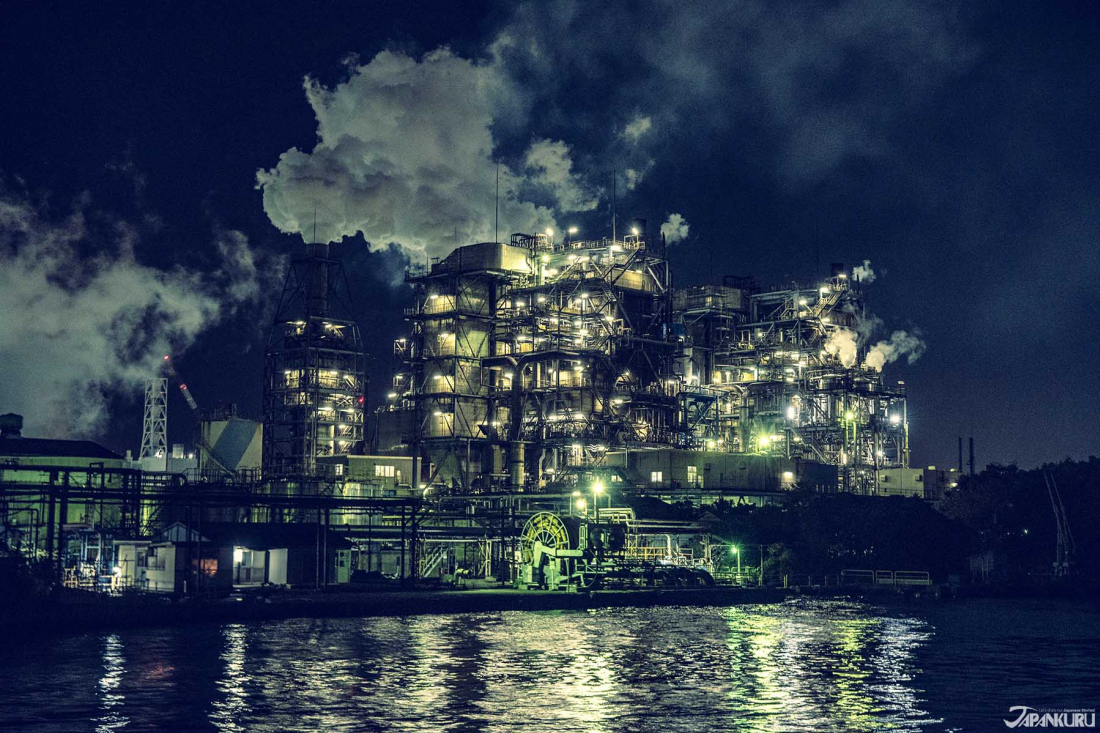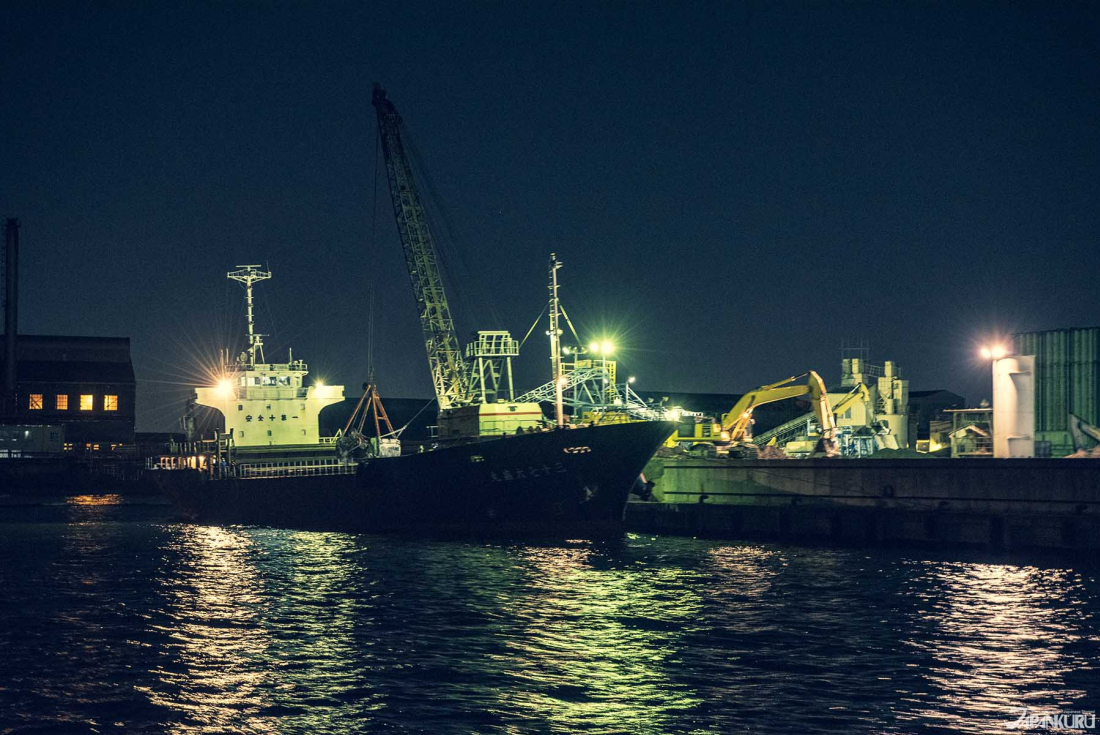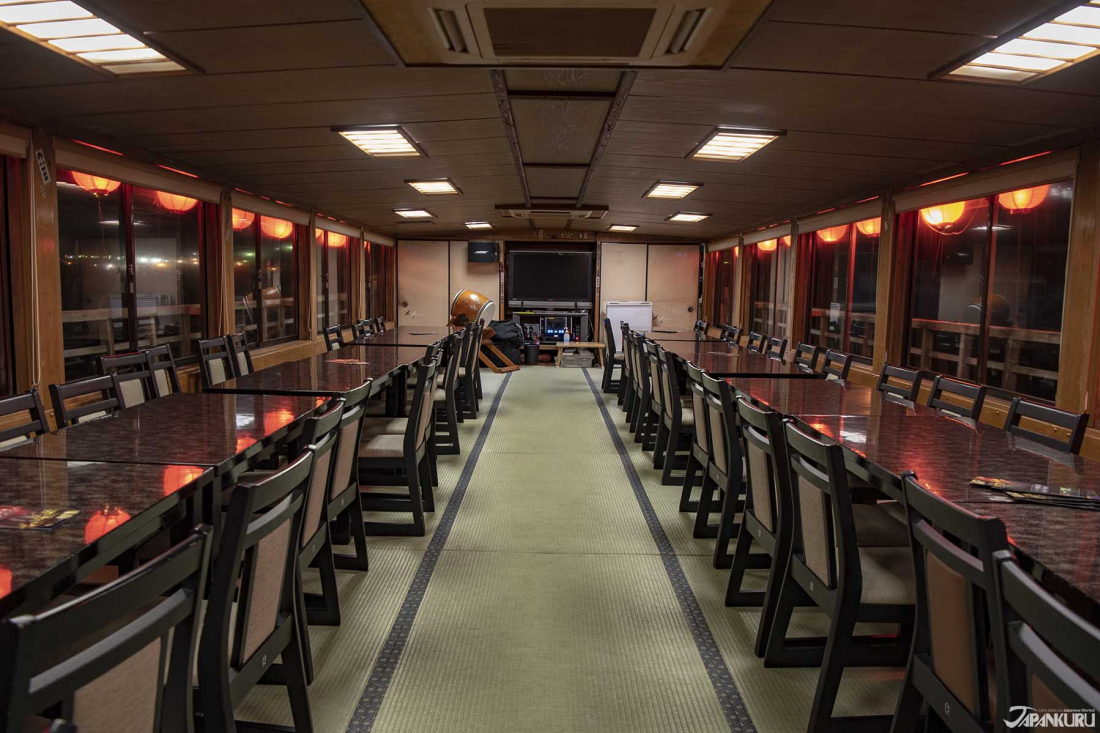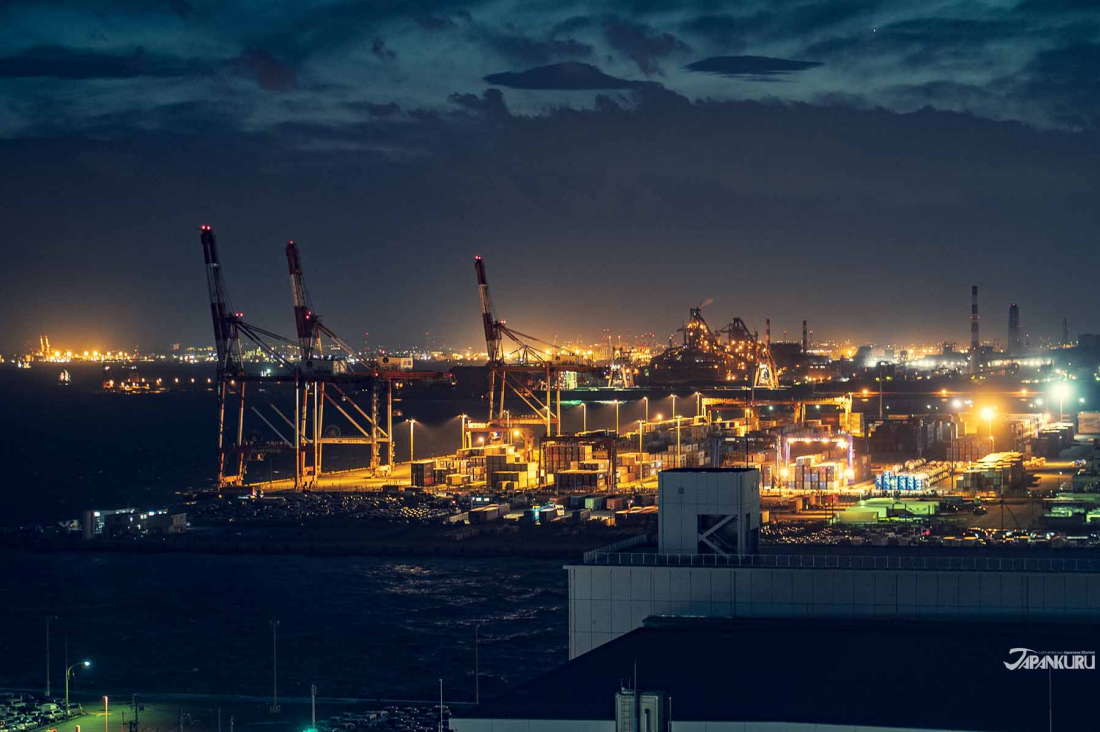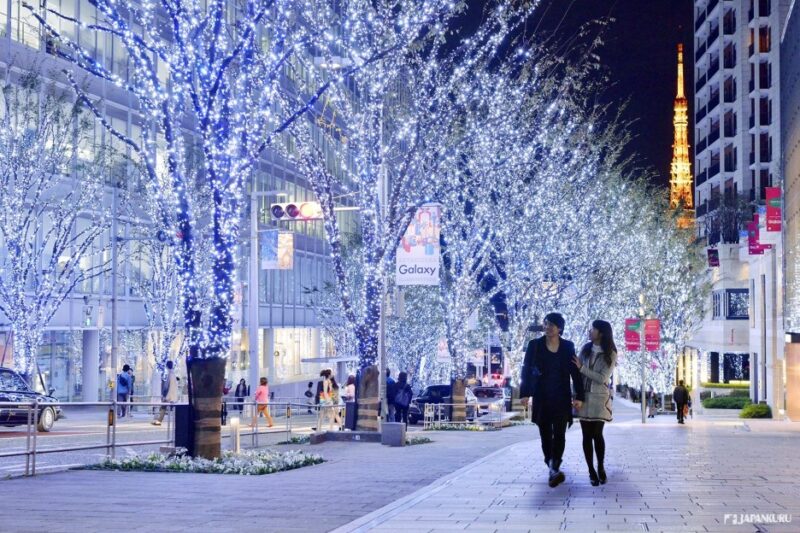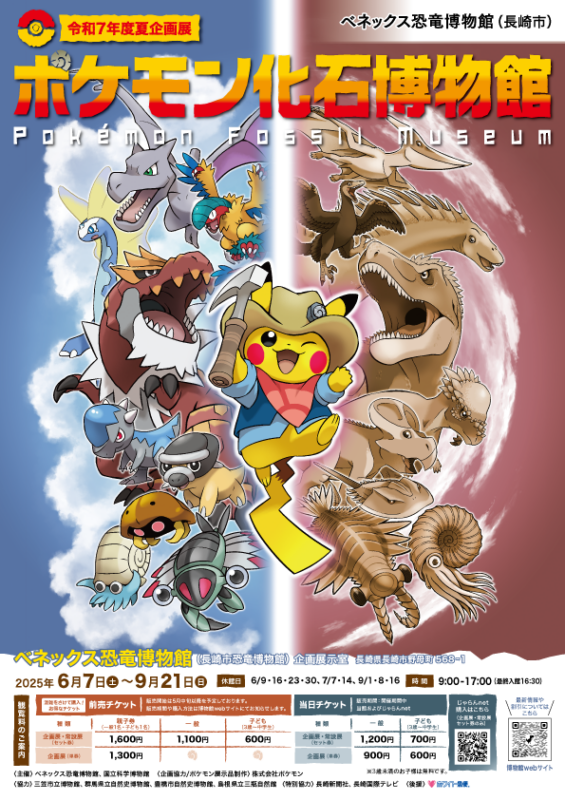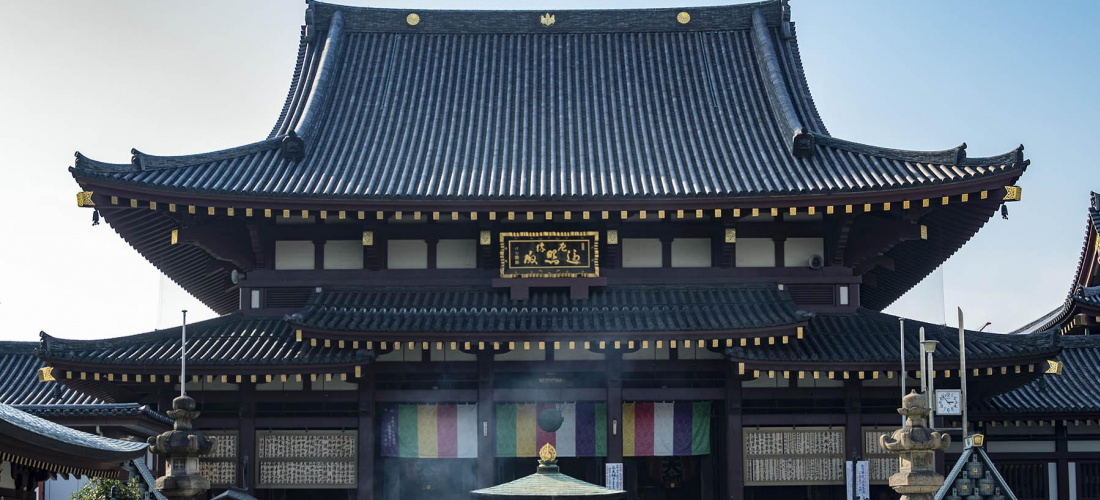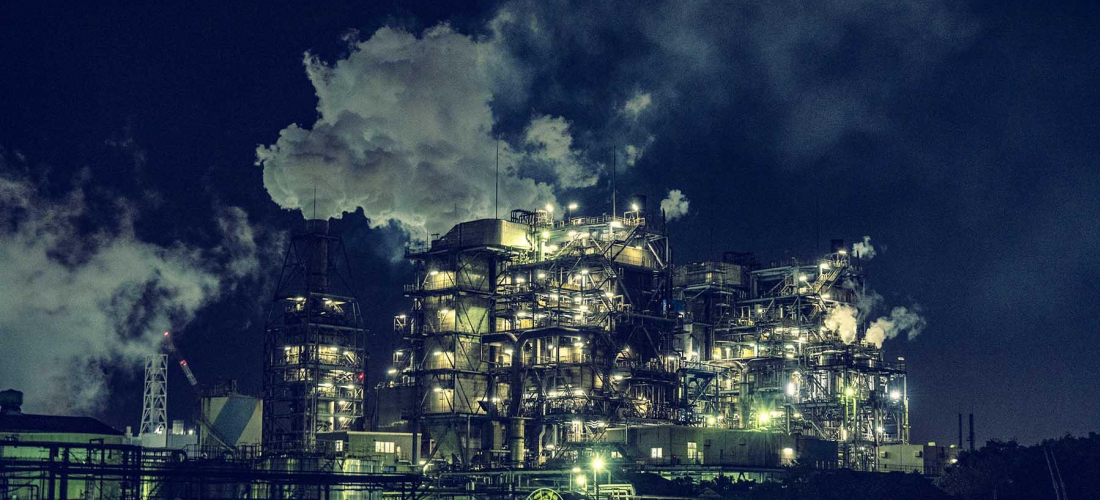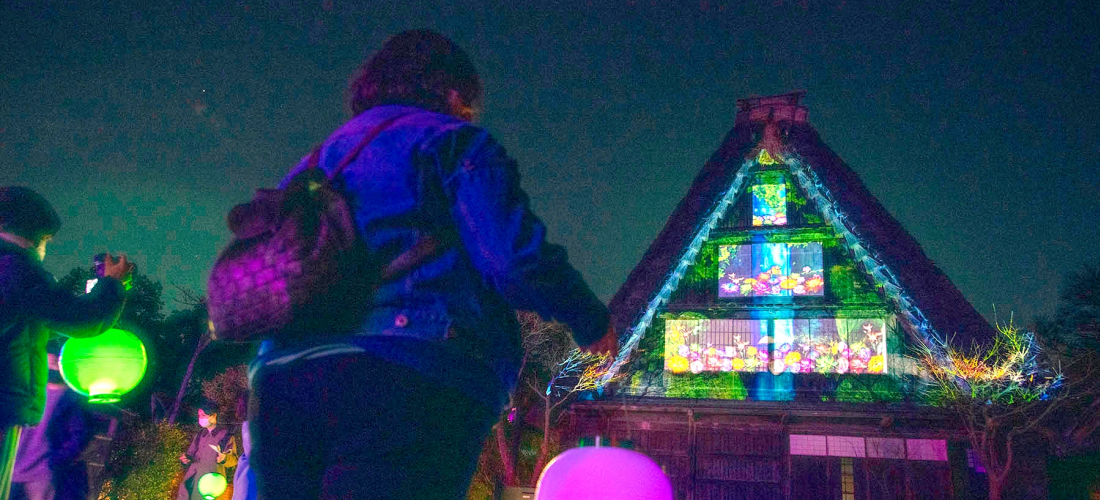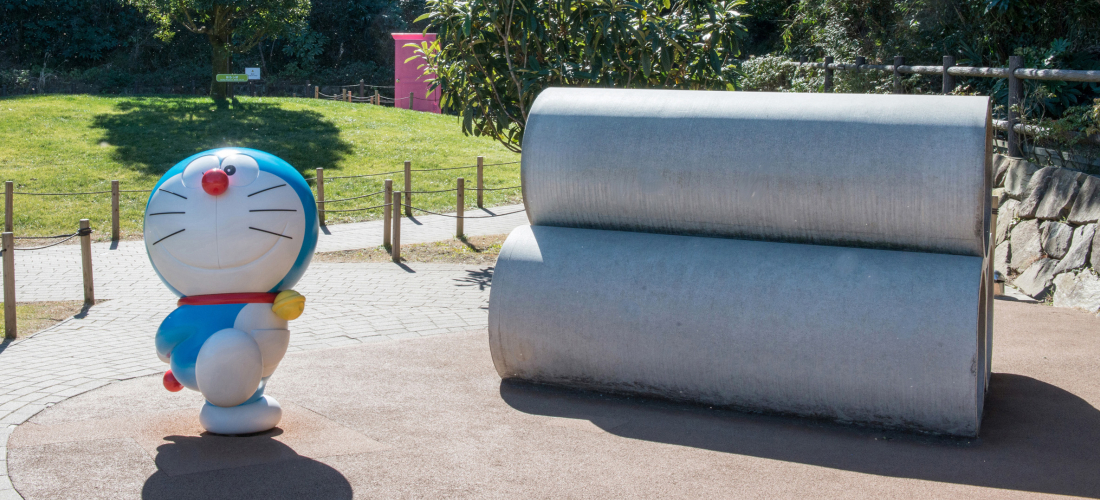
CONTENTS
Retro atmosphere, unique night views, and some exciting museums – check out the Tama Ward of Kawasaki!
A Travel Spot Full of Nostalgia, and Strikingly Beautiful Industrial Night Views
Kawasaki City (川崎市), just 30 minutes from central Tokyo, is famous as a "Beautiful Industrial Nightscape Spot."
The Tama Ward of Kawasaki comes especially highly recommended for travelers who like a little retro flair. With an open-air museum that has traditional Japanese homes from all over the country (and architecture of all kinds) collected and displayed in one place, and another museum dedicated to the creator of the famous manga Doraemon, Fujiko·F·Fujio, plus plenty more, there's enough to fill up a lovely day-long itinerary.
The Japan Open-Air Folk House Museum
This is the Kawasaki City Japan Open-Air Folk House Museum (AKA Nihon Minka-en), found in the city's Tama Ward, where old-fashioned Japanese homes are on show, out in the fresh air. (These Japanese homes built with traditional architecture are called kominka, 古民家.) Head over to wander between 25 different houses designated as precious cultural resources from all over Japan, and see the varying architecture with your own eyes.
Japan Open-Air Folk House Museum (日本民家園, Nihon Minka-en)
Address: 7-11 Masugata, Tama-ku, Kawasaki, Kanagawa
Access by Train: From Shinjuku Station it takes 22 min. on the Odakyu Line to get to Mukogaoka-Yuen Station, and another 13 minutes walking from the station's south exit.
Access by Bus: From Mukogaoka-Yuen Station south exit bus stop, take either the "た83" or "溝19" bus to Ikuta Ryokuchi Iriguchi bus stop.
Hours: Mar to Oct 9:30 – 17:00 / Nov to Feb 9:30 – 16:30
Closed: Mondays (except for public holidays, when the museum will close the next day instead)/Dec 29 to Jan 3
Admission: General 500 yen / High School, University Students 300 yen / Seniors (65+) 300 yen / Children Free
Official Website (en)
Not only can you stroll the spacious grounds and see the well-preserved houses up close, but the museum also offers opportunities to experience little bits of the traditional Japanese lifestyle!
The Varied Shapes of 25 Different Japanese Folk Houses
Even if these houses can all be described with the Japanese word kominka, or simply called folk houses, when we say varied we mean varied. The shapes of the houses and the way they were constructed all vary depending on the era when they were built, their original location and even the surrounding environment, meaning you can learn a lot about the house's origins just by looking carefully. Of course, the houses are a bit too big to take them all in at once, so inside the museum's main exhibition area they've got a diorama featuring miniatures of all the folk houses, making it easy to identify and learn about all the little differences.
The museum's collection doesn't only include residential homes, though. They've also got buildings like this traditional theater stage for live performances. Looks like Japan has loved theater for a long time! (Apparently, this stage mostly has a history of hosting kabuki performances.)
The building was built specifically to be used for stage productions, so it actually has a device built into the floor to manually turn a part of the stage! These days, the alterations necessary for a scene change can be completed with just a press of a button, but back in the day people couldn't rely on such advanced technology, so backdrops were turned around using pure manpower, pushing to move the floor from an area under the stage called the "naraku" (奈落). Apparently it took a full 8 adult men to push the levers needed to turn things! (Just a heads up: the naraku area of the building is not currently open to the public!)
Experiencing Traditional Japanese Artisan Indigo Dyeing
In the museum's Dentou-Kougeikan (traditional craft building) visitors can try their hand at a traditional Japanese method of dyeing fabric using indigo, called aizome (藍染), which has been passed down for generations. Aizome utilizes a dye made out of the fermented indigo plant, which is then soaked into silk, cotton, or linen to turn it a deep blue. At the museum you can take a paid workshop and learn the craft from a pro, dyeing your very own handkerchief or scarf in the process.
During the workshop, before submerging the fabric in dye, you actually use thread, rubber bands, and marbles to create areas that won't be exposed to or suck up the dye. During this process, you create your own unique pattern to decorate the handkerchief or scarf!
After tying up the fabric just right, it's submerged in the indigo dye and then wrung out and exposed to the air in a process that's repeated three or four times.
Lastly, after thoroughly rinsing out the excess dye in clean water, you can spread the fabric out and see just how your design turned out! Dye can still rub off of the finished product, so once it's totally dry, you have to make sure to wash it two or three more times before letting the fabric rub against your skin.
Aizome Indigo Dye Workshop
Workshop Time Slots: 10:00~ / 13:00~ / 14:30~
Time Required: 1 to 1½ hours
Fee: Handkerchiefs 700 yen / Bandanas 880 yen
Official Page (en)
The Fujiko・F・Fujio Museum, in Kawasaki City
ⒸFujiko-Pro
This museum was made to give visitors a chance to enjoy the work of manga artist Fujiko·F·Fujio (famous for iconic manga and anime Doraemon) in a variety of different ways. The museum has spaces where visitors can read some manga and also see Fujiko·F·Fujio illustrations aside from Doraemon, some cute photo spots, a cafe, and a gift shop.
ⒸFujiko-Pro
For fans of classic manga, both the style of the manga on display and the museum decorations themselves are sure to seem a little nostalgic. It feels like, at any moment, you might find yourself within a manga panel!
ⒸFujiko-Pro
Ever wondered what kind of space the numerous works of Fujiko·F·Fujio were created in? You can find the answer here!
Interesting… very interesting… this is the atmosphere where those huge manga hits were born, huh?
ⒸFujiko-Pro
On the second floor you'll find the Manga Corner, which also offers a "slightly mysterious experience."
ⒸFujiko-Pro
On the museum grounds, aside from the museum buildings themselves, there are also outdoor spaces where visitors can meet with some old friends, their favorite characters! Taking a commemorative photo with Doraemon on the rooftop playground area surrounded by greenery is a must.
ⒸFujiko-Pro
The Museum Cafe on the third floor sells some pretty cute original dishes. Apparently, they also release a number of limited-time-only menu items every season!
ⒸFujiko-Pro
The rooftop Museum Gift Shop (called "藤子屋", or Fujikoya, in Japanese) has a collection of limited-edition merchandise, starting with Doraemon's beloved dorayaki pancakes.
ⒸFujiko-Pro
Inside these cute Doraemon and Dorami design cans are eight marshmallows each, printed with eight different designs, making opening them up a pleasure!
When you visit Kawasaki, you have to stop by the Fujiko·F·Fujio Museum to soak up some nostalgic manga, and pick up some cute mementos!
Fujiko·F·Fujio Museum
Address: 2-8-1 Nagao, Tama-ku, Kawasaki, Kanagawa
Access: From the Odakyu Line Noborito Station, take a bus bound for the Fujiko·F·Fujio Museum, or walk 16 minutes from Mukogaoka-Yuen Station.
Hours: 10:00 – 18:00
Admission: Adults 1,000 yen / Middle & High Schoolers 700 yen / Children 4+ 500 yen / Younger Children Free
Official Website (en)
By the way, if you're planning to go from the Japan Open-Air Folk House Museum to the Fujiko·F·Fujio Museum, you might be able to make the trip by bus, so check the schedule! A bus bound for Noborito Station that goes between the open-air museum and the Fujiko·F·Fujio Museum runs 4 times a day!
Japan Open-Air Folk House Museum ➤ Fujiko·F·Fujio Museum Bus Schedule
Weekdays: 10:57 / 12:42 / 14:28 / 16:38
Weekends: 10:38 / 12:58 / 14:48 / 16:36
(Bus does not run on days when the Fujiko·F·Fujio Museum is closed.)
The Industrial Nightscapes of Kawasaki City
Kawasaki City Tourism “Factory Nightscape Cruise Tour”
Kawasaki City is an area right on Tokyo Bay, packed with factories. These factories run 24 hours a day, and there are plenty of spots where lights are shining at all hours of the day, every day of the year. The brightly lit factories developed out into the bay are widely recognized as a mysteriously beautiful attraction in Japan, and a visit to see the night view is not to be missed!
The best spots to see the industrial scenery are a little separated from the center of Kawasaki, so there are buses and so on that will get you there, but the best way to take in everything at once is to hop on a cruise boat!
Inside the boat is a space with handy tables and chairs, where you can even bring your own food and drinks to enjoy onboard! Although, for safety reasons, alcohol is not allowed. Tickets can't be purchased on the day-of, so make your reservations in advance right here. There's a bus that takes you right to the cruise boat dock, so you can just gather with other customers in front of the Nikko Hotel at Kawasaki Station's east exit and hop on when it's time to get going.
Cruise Details
Schedules & Reservations (en)
Fee: Adults (Middle School Students and older) 4,000 yen / Elementary School Students 3,000 yen
(Credit card payment options available when making reservations.)
Meeting Point: In front of the Kawasaki Station east exit Nikko Hotel.
Meeting Time: Mar to Sep 18:20 / Oct to Feb 17:20
If you're going to go see the view via bus or some other form of transportation, then make sure you stop by the Kawasaki Marien observation deck! Entry is totally free, and you can see what the industrial nightscape looks like from up high.
Kawasaki Marien Observation Deck
38-1 Higashiogishima, Kawasaki-ku, Kawasaki, Kanagawa
Access: From Kawasaki Station's bus stop #12, take the "川07" bus to Daiwa Corporation Mae bus stop, and walk an additional 10 minutes.
If you'd like to admire the view with a special someone, a stroll on the deck in Higashi-Ogishima East Park affords you a view of the factory lights glittering across the bay waters.
Higashi-Ogishima East Park
58-1 Higashiogishima, Kawasaki-ku, Kawasaki, Kanagawa
Access: From Kawasaki Station's bus stop #12, take the "川05" bus to Higashi-Ogishima East Park bus stop.
If you want to see the factories from right up close, stop by the Kawasaki Konbinado Chidoricho Yard, to see a scene that looks straight out of a futuristic sci-fi mech anime. It's an ideal spot for photographers who love to take night shots!
Kawasaki Konbinado Chidoricho Yard
14-14 Chidoricho, Kawasaki-ku, Kawasaki, Kanagawa
Access: From Kawasaki Station's bus stop #12, take the "川04" bus to Shiei Futo bus stop.
Have the Time of Your Life in Kawasaki City, Right on the Outskirts of Tokyo!
Kawasaki City is made up of seven different wards, each with their own characteristics and unique attractions, and we only went over a few of the fun, retro spots the city has to offer. On the edge of Tokyo Bay, Kawasaki City has that big city feeling, but it also offers temples, shopping streets, culinary treats, a little nightlife, and some great places to stay, meaning there's always something new to enjoy.
For travelers who like a spot with a relaxed atmosphere and a bit of retro flair, Kawasaki City's Tama Ward comes highly recommended!
Been to Kawasaki, or heading there soon? Let us know all about your experience on twitter, instagram, and facebook!
Details
NAME:Tama Ward, Kawasaki City, Kanagawa (神奈川県川崎市多摩区)
MAP
COMMENT
FEATURED MEDIA
VIEW MORE 
A New Tokyo Animal Destination: Relax & Learn About the World’s Animals in Japan
#pr #japankuru #anitouch #anitouchtokyodome #capybara #capybaracafe #animalcafe #tokyotrip #japantrip #카피바라 #애니터치 #아이와가볼만한곳 #도쿄여행 #가족여행 #東京旅遊 #東京親子景點 #日本動物互動體驗 #水豚泡澡 #東京巨蛋城 #เที่ยวญี่ปุ่น2025 #ที่เที่ยวครอบครัว #สวนสัตว์ในร่ม #TokyoDomeCity #anitouchtokyodome

Shohei Ohtani Collab Developed Products & Other Japanese Drugstore Recommendations From Kowa
#pr #japankuru
#kowa #syncronkowa #japanshopping #preworkout #postworkout #tokyoshopping #japantrip #일본쇼핑 #일본이온음료 #오타니 #오타니쇼헤이 #코와 #興和 #日本必買 #日本旅遊 #運動補充能量 #運動飲品 #ช้อปปิ้งญี่ปุ่น #เครื่องดื่มออกกำลังกาย #นักกีฬา #ผลิตภัณฑ์ญี่ปุ่น #อาหารเสริมญี่ปุ่น

도쿄 근교 당일치기 여행 추천! 작은 에도라 불리는 ‘가와고에’
세이부 ‘가와고에 패스(디지털)’ 하나면 편리하게 이동 + 가성비까지 완벽하게! 필름카메라 감성 가득한 레트로 거리 길거리 먹방부터 귀여움 끝판왕 핫플&포토 스폿까지 총집합!
Looking for day trips from Tokyo? Try Kawagoe, AKA Little Edo!
Use the SEIBU KAWAGOE PASS (Digital) for easy, affordable transportation!
Check out the historic streets of Kawagoe for some great street food and plenty of picturesque retro photo ops.
#pr #japankuru #도쿄근교여행 #가와고에 #가와고에패스 #세이부패스 #기모노체험 #가와고에여행 #도쿄여행코스 #도쿄근교당일치기 #세이부가와고에패스
#tokyotrip #kawagoe #tokyodaytrip #seibukawagoepass #kimono #japantrip

Hirakata Park, Osaka: Enjoy the Classic Japanese Theme Park Experience!
#pr #japankuru #hirakatapark #amusementpark #japantrip #osakatrip #familytrip #rollercoaster #retrôvibes #枚方公園 #大阪旅遊 #關西私房景點 #日本親子旅行 #日本遊樂園 #木造雲霄飛車 #히라카타파크 #สวนสนุกฮิราคาตะพาร์ค

🍵Love Matcha? Upgrade Your Matcha Experience With Tsujiri!
・160년 전통 일본 말차 브랜드 츠지리에서 말차 덕후들이 픽한 인기템만 골라봤어요
・抹茶控的天堂!甜點、餅乾、飲品一次滿足,連伴手禮都幫你列好清單了
・ส่องมัทฉะสุดฮิต พร้อมพาเที่ยวร้านดังในอุจิ เกียวโต
#pr #japankuru #matcha #matchalover #uji #kyoto #japantrip #ujimatcha #matchalatte #matchasweets #tsujiri #말차 #말차덕후 #츠지리 #교토여행 #말차라떼 #辻利抹茶 #抹茶控 #日本抹茶 #宇治 #宇治抹茶 #日本伴手禮 #抹茶拿鐵 #抹茶甜點 #มัทฉะ #ของฝากญี่ปุ่น #ชาเขียวญี่ปุ่น #ซึจิริ #เกียวโต

・What Is Nenaito? And How Does This Sleep Care Supplement Work?
・你的睡眠保健品——認識「睡眠茶氨酸錠」
・수면 케어 서플리먼트 ‘네나이토’란?
・ผลิตภัณฑ์เสริมอาหารดูแลการนอน “Nenaito(ネナイト)” คืออะไร?
#pr #japankuru #sleepcare #japanshopping #nenaito #sleepsupplement #asahi #睡眠茶氨酸錠 #睡眠保健 #朝日 #l茶胺酸 #日本藥妝 #日本必買 #일본쇼핑 #수면 #건강하자 #네나이토 #일본영양제 #อาหารเสริมญี่ปุ่น #ช้อปปิ้งญี่ปุ่น #ร้านขายยาญี่ปุ่น #ดูแลตัวเองก่อนนอน #อาซาฮิ

Japanese Drugstore Must-Buys! Essential Items from Hisamitsu® Pharmaceutical
#PR #japankuru #hisamitsu #salonpas #feitas #hisamitsupharmaceutical #japanshopping #tokyoshopping #traveltips #japanhaul #japantrip #japantravel

Whether you grew up with Dragon Ball or you just fell in love with Dragon Ball DAIMA, you'll like the newest JINS collab. Shop this limited-edition Dragon Ball accessory collection to find some of the best Dragon Ball merchandise in Japan!
>> Find out more at Japankuru.com! (link in bio)
#japankuru #dragonball #dragonballdaima #animecollab #japanshopping #jins #japaneseglasses #japantravel #animemerch #pr

This month, Japankuru teamed up with @official_korekoko to invite three influencers (originally from Thailand, China, and Taiwan) on a trip to Yokohama. Check out the article (in Chinese) on Japankuru.com for all of their travel tips and photography hints - and look forward to more cool collaborations coming soon!
【橫濱夜散策 x 教你怎麼拍出網美照 📸✨】
每次來日本玩,是不是都會先找旅日網紅的推薦清單?
這次,我們邀請擁有日本豐富旅遊經驗的🇹🇭泰國、🇨🇳中國、🇹🇼台灣網紅,帶你走進夜晚的橫濱!從玩樂路線到拍照技巧,教你怎麼拍出最美的夜景照。那些熟悉的景點,換個視角說不定會有新發現~快跟他們一起出發吧!
#japankuru #橫濱紅磚倉庫 #汽車道 #中華街 #yokohama #japankuru #橫濱紅磚倉庫 #汽車道 #中華街 #yokohama #yokohamaredbrickwarehouse #yokohamachinatown

If you’re a fan of Vivienne Westwood's Japanese designs, and you’re looking forward to shopping in Harajuku this summer, we’ve got important news for you. Vivienne Westwood RED LABEL Laforet Harajuku is now closed for renovations - but the grand reopening is scheduled for July!
>> Find out more at Japankuru.com! (link in bio)
#japankuru #viviennewestwood #harajuku #omotesando #viviennewestwoodredlabel #viviennewestwoodjapan #비비안웨스트우드 #오모테산도 #하라주쿠 #日本購物 #薇薇安魏斯伍德 #日本時尚 #原宿 #表參道 #japantrip #japanshopping #pr

Ready to see TeamLab in Kyoto!? At TeamLab Biovortex Kyoto, the collective is taking their acclaimed immersive art and bringing it to Japan's ancient capital. We can't wait to see it for ourselves this autumn!
>> Find out more at Japankuru.com! (link in bio)
#japankuru #teamlab #teamlabbiovortex #kyoto #kyototrip #japantravel #artnews
Photos courtesy of teamLab, Exhibition view of teamLab Biovortex Kyoto, 2025, Kyoto ® teamLab, courtesy Pace Gallery

Japanese Makeup Shopping • A Trip to Kamakura & Enoshima With Canmake’s Cool-Toned Summer Makeup
#pr #canmake #enoshima #enoden #에노시마 #캔메이크 #japanesemakeup #japanesecosmetics

⚔️The Robot Restaurant is gone, but the Samurai Restaurant is here to take its place. Check it out, and don't forget your coupon!
🍣신주쿠의 명소 로봇 레스토랑이 사무라이 레스토랑으로 부활! 절찬 쿠폰 발급중
💃18歲以上才能入場的歌舞秀,和你想的不一樣!拿好優惠券去看看~
#tokyo #shinjuku #samurairestaurant #robotrestaurant #tokyotrip #도쿄여행 #신주쿠 #사무라이레스토랑 #이색체험 #할인이벤트 #歌舞伎町 #東京景點 #武士餐廳 #日本表演 #日本文化體驗 #japankuru #japantrip #japantravel #japanlovers #japan_of_insta

Japanese appliance & electronics shopping with our KOJIMA x BicCamera coupon!
用JAPANKURU的KOJIMA x BicCamera優惠券買這些正好❤️
코지마 x 빅 카메라 쿠폰으로 일본 가전 제품 쇼핑하기
#pr #japankuru #japanshopping #kojima #biccamera #japaneseskincare #yaman #dji #osmopocket3 #skincaredevice #日本購物 #美容儀 #相機 #雅萌 #日本家電 #일본여행 #면세 #여행꿀팁 #일본쇼핑리스트 #쿠폰 #일본쇼핑 #일본브랜드 #할인 #코지마 #빅카메라 #japankurucoupon

